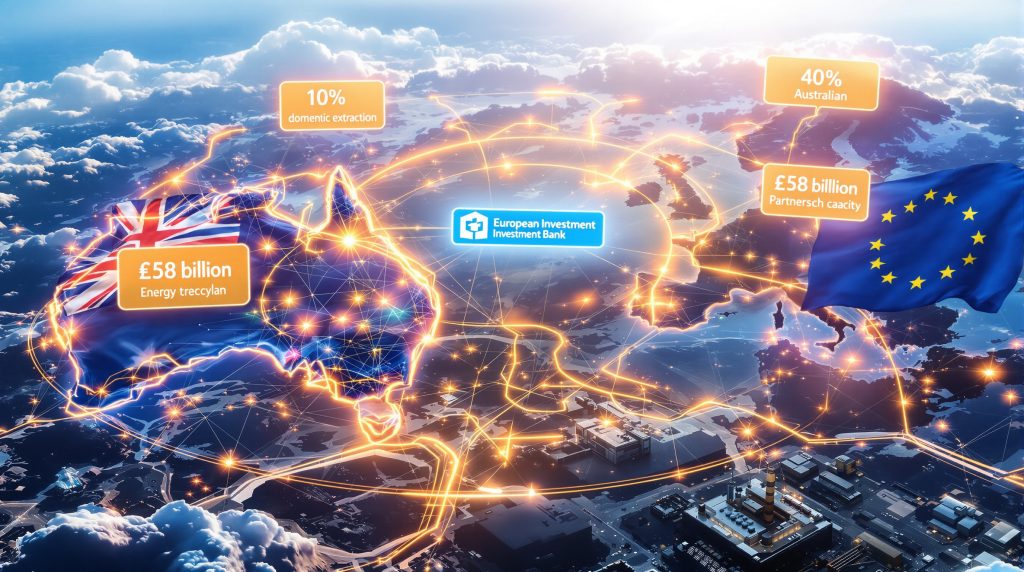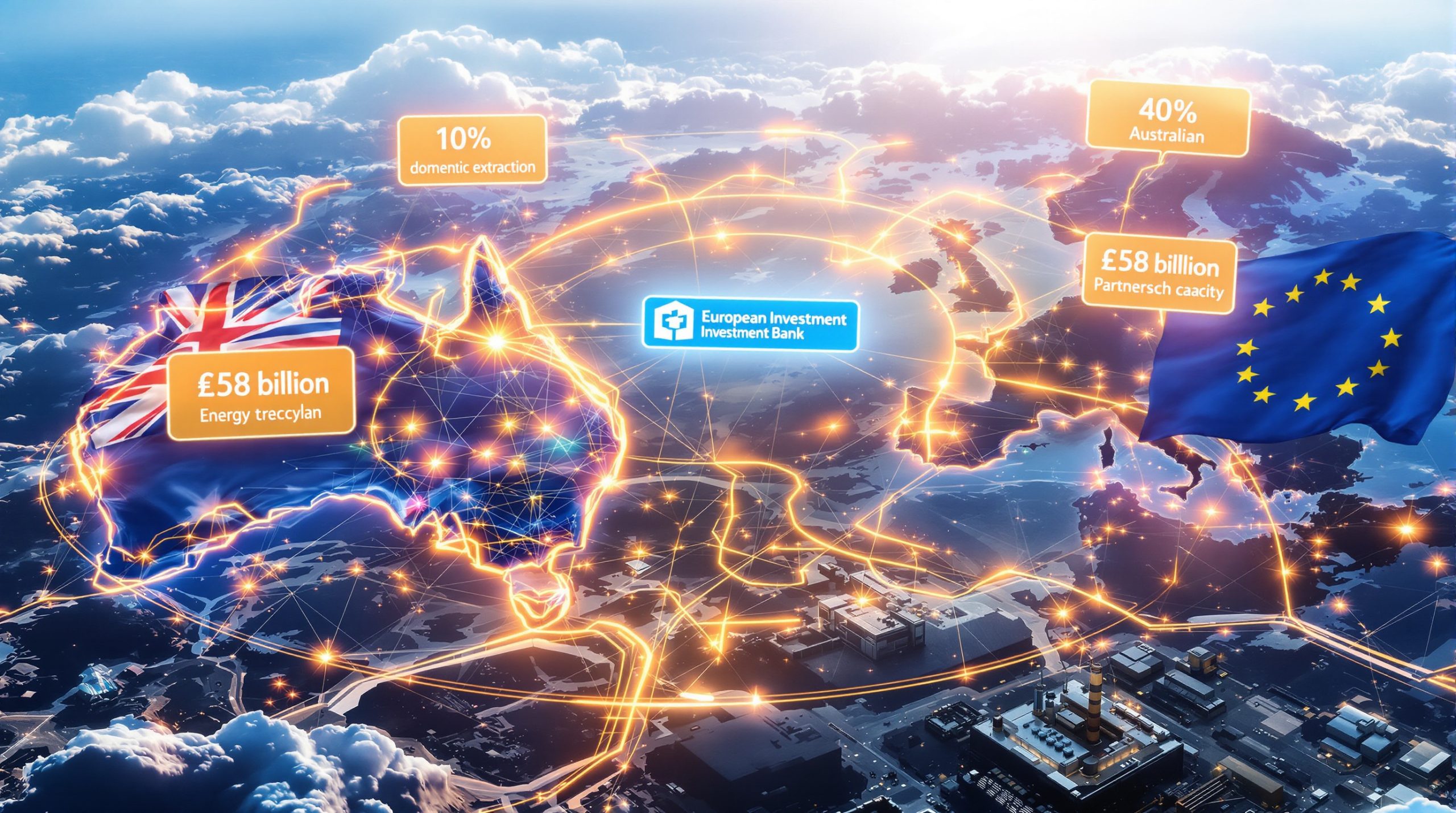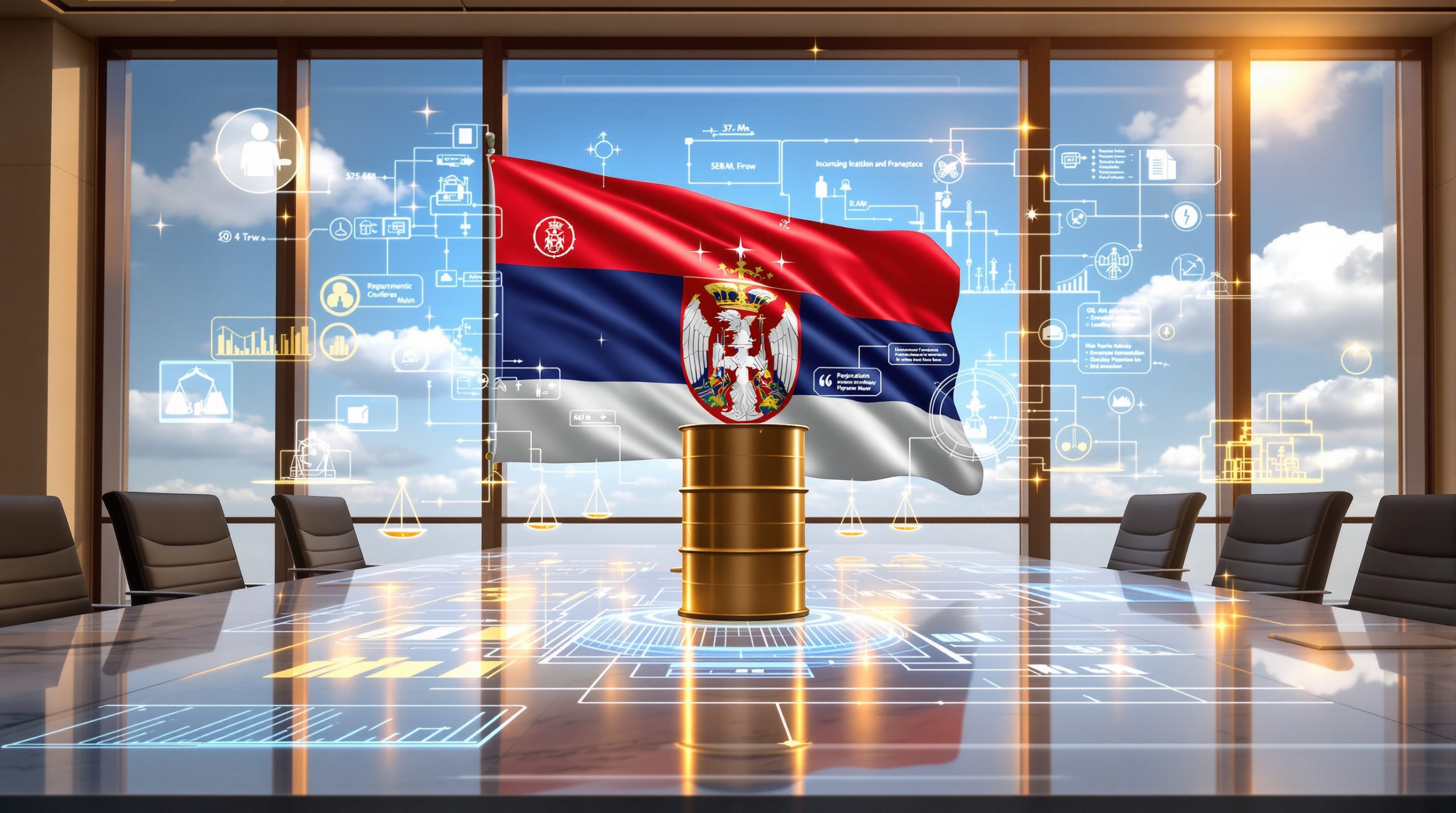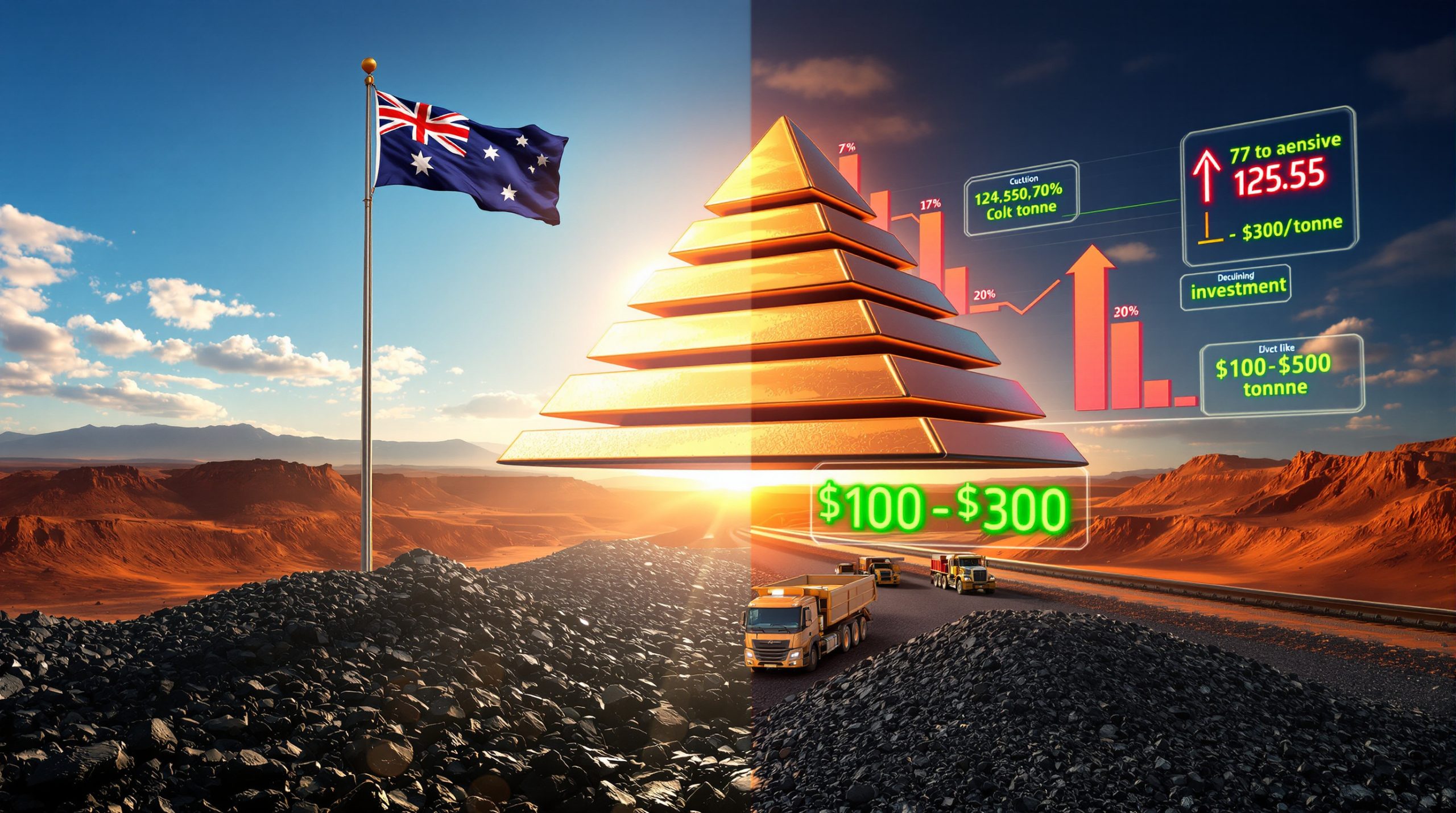Understanding the Strategic Partnership Framework
Global critical minerals markets face unprecedented disruption as traditional supply chains encounter mounting geopolitical pressures and demand volatility. The convergence of energy transition requirements, democratic alliance building, and resource security imperatives creates new frameworks for international cooperation that extend far beyond conventional trade relationships.
Australia and EU critical minerals cooperation represents a fundamental shift in how democratic nations approach strategic resource partnerships. Rather than pursuing purely transactional commodity exchanges, this collaboration establishes integrated development mechanisms that align geological advantages with processing capabilities, financial resources, and end-use manufacturing requirements. Furthermore, this partnership addresses the mining industry evolution taking place globally.
Regulatory Architecture Driving Cooperation
The European Union's Critical Raw Materials Act (CRMA) establishes binding targets that create structural demand for international partnerships: 10% domestic extraction, 40% processing capacity, and 25% recycling rates by 2030. These targets acknowledge that EU domestic resources alone cannot satisfy critical minerals requirements for energy transition and digital transformation initiatives.
Australia's mining regulatory environment demonstrates compatibility with EU environmental, social, and governance standards through several key mechanisms. The establishment of a proposed European CRM facility further reinforces these alignment efforts.
- Environmental impact assessment protocols aligned with EU Environmental Impact Assessment Directive 2014/52/EU
- Social governance frameworks compatible with OECD Guidelines for Multinational Enterprises
- Supply chain transparency requirements under the EU Conflict Minerals Regulation (2017/821)
- Rehabilitation and closure standards matching EU environmental restoration obligations
This regulatory alignment eliminates administrative friction that typically complicates international resource partnerships. Projects developed under Australian mining law can meet EU sustainability requirements without dual compliance systems, reducing operational complexity and development costs.
The 34 critical raw materials identified under the CRMA span lithium for battery production, rare earth elements for renewable energy systems, cobalt for electric vehicle batteries, and graphite for energy storage applications. Australia possesses established production capacity or development projects across the majority of these priority materials.
Financial Innovation Through EIB Global Partnership
The Declaration of Intent signed in November 2025 between EIB Global and the Australian Government creates structured financing mechanisms that address fundamental challenges in critical minerals project development. Traditional mining finance struggles with long development timelines, substantial capital requirements, and uncertain demand profiles that characterize emerging critical minerals markets.
EIB Global financing mechanisms established through the Declaration include:
| Investment Mechanism | Function | Strategic Advantage |
|---|---|---|
| Direct equity participation | Risk sharing across project phases | Reduced capital requirements for Australian developers |
| Long-term supply contracts | Price stability and demand certainty | Guaranteed market access for Australian producers |
| Technology transfer partnerships | Advanced processing capabilities | Value-added mineral products and innovation exchange |
| Infrastructure co-investment | Shared development costs | Accelerated project timelines and reduced individual exposure |
This framework enables risk mitigation for critical minerals projects across the entire value chain from exploration through processing and recycling operations. EIB approved €60 billion in financing for climate action and environment projects in 2023, demonstrating substantial lending capacity for critical minerals development initiatives.
Direct equity participation allows EIB Global to take ownership stakes in Australian critical minerals projects, reducing capital burden on local developers while aligning financial returns with project success. Long-term supply contracts create 10-15 year demand certainty that facilitates project financing viability through guaranteed off-take agreements.
Geopolitical Drivers and Strategic Positioning
Democratic nations increasingly recognise critical minerals supply chains as national security infrastructure requiring alliance-based solutions. China controls approximately 60-70% of global rare earth element processing capacity, creating strategic vulnerabilities that extend beyond economic considerations into defence and technology sovereignty.
Chinese export restrictions implemented since 2010 demonstrate how resource concentration enables political leverage over importing nations. According to the Australian Government's strategic minerals partnership, China's export quotas on rare earth elements remain volatile and subject to geopolitical tensions, creating supply uncertainty for manufacturers dependent on these materials for advanced technologies.
Alliance Structures for Resource Security
Australia and EU critical minerals cooperation represents deliberate diversification away from authoritarian-controlled supply chains toward partnerships among democratic allies. This approach addresses multiple strategic objectives whilst supporting energy transition mining initiatives globally.
- Supply chain resilience through geographic and political diversification
- Environmental standards alignment reducing regulatory arbitrage risks
- Technology transfer opportunities enhancing processing capabilities
- Defence cooperation integration supporting broader security partnerships
Global critical minerals demand growth of 40-60% by 2040 due to energy transition creates market opportunities for alternative suppliers. Democratic nations possess geological resources, technological capabilities, and financial resources necessary to develop parallel supply chains independent of authoritarian control.
The EU imports approximately 98% of its rare earth element requirements, creating strategic vulnerability that extends across renewable energy, electric vehicles, defence systems, and telecommunications infrastructure. Australia's geological endowments in rare earths, lithium, cobalt, and other critical minerals position it as a natural partner for EU supply diversification.
Strategic Autonomy Framework Implementation
The EU's strategic autonomy agenda prioritises partnerships with politically stable, democratically governed nations possessing advanced mining infrastructure. Australia represents an optimal strategic partner through established geological resources, mature regulatory frameworks, democratic governance alignment, and geographic distance from geopolitical instability zones.
EU Strategic Compass and Industrial Strategy for Net-Zero Europe guides partnership selection criteria emphasising:
- Domestic extraction initiatives targeting increased EU mining and processing capacity
- Partner diversification developing multiple democratic supply sources
- Circular economy integration advancing recycling and secondary material recovery
- Technology advancement supporting innovation in processing technologies
The €1 trillion EU Green Deal investment target by 2030 creates substantial financing capacity for critical minerals partnerships. EU requirements for a 25-fold increase in lithium processing by 2030 to meet battery production targets demonstrate the scale of partnership opportunities. Additionally, Australia's strategic reserve initiatives complement these European objectives.
Economic Integration and Investment Mechanisms
Australia-EU bilateral trade volumes reached €49 billion in goods and €38 billion in services in 2025, establishing substantial economic integration that provides foundation for expanded critical minerals cooperation. Spanish companies expanding presence in Australia's energy, defence, and transport sectors indicate broader European industrial integration beyond minerals alone.
Joint project development mechanisms accelerate market entry by distributing financial requirements across multiple parties while creating demand certainty through long-term contracts. This shared risk approach enables smaller and mid-tier Australian mining companies to advance projects that would otherwise remain underfunded.
Technology Transfer and Value Addition
Technology transfer partnerships provide Australian producers access to EU advanced processing techniques, enabling value-added mineral production rather than raw ore exports. Processing efficiency improvements of 5-15% from technology transfer enhance project economics while supporting EU manufacturing competitiveness. These advances contribute significantly to the lithium battery revolution occurring globally.
Critical minerals cooperation facilitates integration across multiple industry sectors:
- Defence manufacturing: Secure cobalt and rare earth supplies for radar systems and communications equipment
- Battery production: Lithium supply security supporting EU electric vehicle manufacturing
- Telecommunications infrastructure: Rare earth elements essential for 5G networks and advanced communications
- Renewable energy systems: Critical minerals for wind turbines, solar panels, and energy storage
European defence expenditure increased approximately 21% in 2023 compared to 2022, reaching €230 billion and creating substantial demand for defence-grade critical minerals. Secure supply chains for these materials become essential for European defence industrial base resilience.
Infrastructure Development and Co-Investment
Critical minerals projects require substantial infrastructure investment in processing facilities, transportation networks, and port capabilities. Capital requirements range from €200 million to €2+ billion depending on commodity and scale, creating financing barriers for individual developers.
EU co-investment in Australian infrastructure reduces individual project risk while ensuring supply chain integration meets European manufacturing specifications. Joint infrastructure development includes:
- Processing facilities incorporating EU technology standards
- Transportation networks connecting mines to processing and export facilities
- Port infrastructure enabling efficient product shipping to European markets
- Research and development facilities supporting ongoing technology advancement
Regulatory Compliance and Standards Alignment
Australia's mining environmental standards demonstrate operational compatibility with EU sustainability requirements, eliminating regulatory friction that complicates international partnerships. Both jurisdictions mandate comprehensive environmental impact assessments, ongoing monitoring requirements, restoration obligations, and stakeholder engagement protocols.
Environmental Framework Harmonisation
Environmental standard compatibility encompasses multiple regulatory areas:
- Water management: Comparable requirements for quality monitoring and protection
- Biodiversity conservation: Aligned habitat protection and species preservation protocols
- Air quality standards: Similar emission limits and monitoring requirements
- Waste management: Compatible standards for tailings storage and processing waste
- Closure and rehabilitation: Mandatory environmental restoration at project end-of-life
This regulatory alignment reduces compliance costs for joint ventures operating across both jurisdictions while ensuring environmental performance meets shared democratic values and international standards.
Certification and Market Access Systems
The European Institute of Innovation and Technology (EIT) for Raw Materials coordinates certification and best practice exchange between Australian and EU mining operations. EIT RawMaterials includes 70+ partners across 26 countries, providing established networks for knowledge transfer and standard harmonisation.
Certification processes ensure Australian critical minerals meet EU processing and end-use specifications:
- Sustainable sourcing verification confirming environmental and social compliance
- Processing specifications matching EU manufacturing requirements
- Supply chain traceability enabling end-to-end tracking from mine to end-user
- Recycling integration supporting EU circular economy targets
These certification frameworks enable market access to premium-priced EU supply chains prioritising environmental and social criteria while providing competitive advantages for certified Australian producers.
Market Impact and Competitive Positioning
Australia and EU critical minerals cooperation creates alternative supply sources that reduce Chinese market influence over pricing and availability. Long-term supply contracts between Australian producers and EU manufacturers establish price stability mechanisms benefiting both resource developers and end-use industries.
Priority Minerals and Strategic Focus
"Critical Focus Areas": Lithium extraction and processing for battery manufacturing, rare earth element separation for renewable energy systems, cobalt production for electric vehicle batteries, and graphite processing for energy storage applications represent priority commodities driving partnership initiatives.
Lithium processing facilities requiring €500 million+ capital investment can now access EIB co-financing, reducing individual project risk exposure while accelerating development timelines. Long-term battery raw material contracts with EU manufacturers create demand certainty extending 10-15 years beyond initial production commencement.
Chinese processing dominance in rare earth elements creates opportunities for alternative suppliers meeting democratic governance and environmental standards. Australian rare earth projects supported by EU investment and technology can capture market share from producers dependent on Chinese processing capabilities.
Pricing Dynamics and Market Restructuring
Increased Australian production capacity supported by EU investment creates competitive alternatives to Chinese-dominated supply chains. Typical critical minerals project development timelines of 5-10 years mean partnership benefits will materialise progressively through the 2030s as projects advance through development phases.
Market restructuring occurs through multiple mechanisms:
- Supply diversification reducing single-source dependencies
- Long-term contracting creating price stability for producers and consumers
- Processing competition challenging Chinese technological advantages
- Democratic alliance sourcing premium pricing for secure supply chains
Implementation Challenges and Risk Factors
The stalled Australia-EU Free Trade Agreement presents ongoing challenges, with disagreements over agricultural market access and EU protection of geographic indications creating broader trade relationship complications. These unresolved issues could impact critical minerals cooperation timelines and investment flows.
Infrastructure and Development Requirements
Australian critical minerals projects require significant infrastructure investment that extends beyond individual mine sites to encompass:
- Regional processing hubs serving multiple mining operations
- Skilled workforce development for advanced processing technologies
- Research and development capabilities maintaining technological competitiveness
- Transportation networks connecting remote deposits to processing and export facilities
- Port expansion accommodating increased critical minerals export volumes
EU co-investment in infrastructure reduces individual project risk while ensuring supply chain integration meets European manufacturing specifications. However, coordination between multiple stakeholders across two continents creates project management complexity requiring institutional frameworks for dispute resolution and performance monitoring.
Regulatory and Political Risk Management
Long-term critical minerals partnerships face potential disruption from:
- Regulatory changes affecting mining approvals or environmental requirements
- Political transitions altering government support for international partnerships
- Trade policy shifts impacting tariffs or import regulations
- Currency fluctuations affecting project economics and return calculations
- Technology disruption changing mineral requirements or processing methods
Risk mitigation requires robust contractual frameworks, political risk insurance, and flexibility mechanisms accommodating changing circumstances over 15-20 year project lifecycles.
Future Implications and Strategic Outcomes
Australia and EU critical minerals cooperation establishes a template for democratic resource partnerships that could extend to other allied nations including Canada, the United States, and Japan. This alliance structure has potential to fundamentally reshape global critical minerals markets by reducing authoritarian control over strategic resources.
Long-term Market Transformation
Democratic resource cooperation creates several transformative effects:
- Supply chain resilience through geographic and political diversification
- Technology advancement via collaborative research and development
- Environmental standards elevation across global mining operations
- Market competition reducing monopolistic pricing power
- Strategic autonomy for democratic nations in critical technologies
Partnership expansion potential includes integration with existing initiatives such as the Minerals Security Partnership, QUAD critical minerals cooperation, and AUKUS technology sharing agreements. Institutional frameworks developed for Australia-EU cooperation provide models for broader alliance-based resource development.
Energy Transition Acceleration
Secure, democratically sourced critical minerals supplies enable accelerated renewable energy deployment and electric vehicle adoption across EU markets. Australian resource capacity supported by European investment and technology creates supply chain resilience essential for achieving climate transition objectives without geopolitical vulnerability.
Climate transition timelines depend critically on materials availability, with lithium, cobalt, and rare earth shortages potentially constraining deployment rates for renewable energy and electric transportation. Australia and EU critical minerals cooperation directly addresses these potential bottlenecks through coordinated capacity development.
Battery manufacturing competitiveness in European markets requires secure raw material supplies at predictable prices. Long-term contracts with Australian producers provide cost certainty enabling European manufacturers to compete globally while maintaining supply chain security aligned with democratic values.
Regulatory Framework Evolution
Both Australian and EU regulatory frameworks continue evolving to accommodate increased cooperation, with streamlined approval processes for joint ventures and harmonised environmental standards reducing administrative complexity. Policy adaptations create institutional foundations for expanded partnership scope beyond current critical minerals focus areas.
Policy Innovation and Adaptation
Regulatory evolution encompasses:
- Fast-track approval processes for projects meeting strategic partnership criteria
- Environmental equivalency recognition reducing dual compliance requirements
- Technology transfer facilitation through intellectual property frameworks
- Investment protection mechanisms for long-term international partnerships
- Dispute resolution systems managing cross-jurisdictional conflicts
These policy adaptations require coordination between federal and state governments in Australia and among EU member states to ensure consistent implementation across jurisdictions. However, as highlighted in recent EU strategic projects announcements, progress continues advancing rapidly.
Defence and Security Integration
Australia-EU negotiations on cyber-defence, procurement, and joint research and development reflect broader security cooperation that reinforces critical minerals partnership strategic value. Resource security increasingly integrates with defence policy as nations recognise supply chain vulnerabilities represent national security risks requiring allied coordination.
Defence industrial base resilience depends on secure access to critical minerals for advanced weapons systems, communications equipment, and electronic warfare capabilities. Australia and EU critical minerals cooperation supports broader defence partnership objectives while creating economic benefits for both regions.
Technology sovereignty considerations drive partnerships in critical minerals processing, battery manufacturing, and advanced materials development. Joint research initiatives enable shared technological advancement while maintaining competitive advantages over authoritarian competitors.
Disclaimer: This analysis involves projections and assessments of future market developments, policy changes, and partnership outcomes that may differ significantly from actual results. Critical minerals markets remain subject to geological, technological, regulatory, and geopolitical uncertainties that could materially affect project viability and partnership success. Readers should conduct independent analysis before making investment or policy decisions based on this information.
Ready to Capitalise on Critical Minerals Investment Opportunities?
Discovery Alert's proprietary Discovery IQ model delivers real-time alerts on significant ASX critical minerals discoveries, instantly empowering subscribers to identify actionable opportunities ahead of the broader market. Understand why major mineral discoveries can lead to substantial returns by exploring historic examples of exceptional outcomes, then begin your 30-day free trial today to position yourself ahead of the market.




